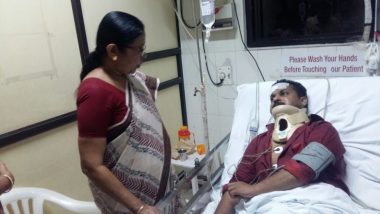Six months ago in May, Kerala was rocked by the Nipah virus outbreak, which claimed 17 lives. Kerala government’s concerted efforts at swift intervention could help contain a possible epidemic, which could have had devastating consequences. Fruit bats were identified as the culprits behind the outbreak by the Indian Council of Medical Research. A new study published in October 2017 in The Journal of Infectious Disease has come out with new findings. The study revealed that only patient zero or the index case (the first case was infected by the fruit bats. All the other cases of infections were a result of transmissions from person-to-person at the three hospitals at the Kozhikode district. What is Nipah Virus? How it Spreads, Symptoms & Preventive Measures.
Nipah virus infection is a life-threatening disease spread by the emerging zoonotic virus Nipah. It has the potential to assume epidemic proportions, compromising global health security. In May 2018, Kozhikode district became the ground zero for the infection, which swiftly claimed more than a dozen lives. Fact or Hoax: Will Eating Chicken or Fruits Cause Nipah Virus Infection?
The new study titled "Outbreak Investigation of Nipah Virus Disease in Kerala, India, 2018" reviewed all the cases from the hospital where the patients were admitted, the residence of the victims, neighbourhood, healthcare facilities, interviews with the family members, community leaders and healthcare workers for the study.
The researches quizzed the subjects about minute details of the contact events, such as touching the victim’s body, nursing, feeding, sharing bed, sharing room, cleaning bodily fluids, funeral practices, etc. They even pored through the hospital admissions records and patient logs to “evaluate companion contacts.”
The team identified 23 cases of Nipah virus disease, which included the index case, 18 confirmed cases and four probable cases. Three hospitals in Kozhikode District – Taluk Headquarters hospital, Perambra Government Medical College and Community Health Centre in Balussery – were found to be the transmission centres where the virus was spread to other patients.
In the case of patient zero (index case), the 27-year-old was known to be healthy prior to the disease and had limited social contacts. According to the review, he was a nature and an animal lover who reared rabbits and ducks at the time of his death. Nipah Virus Is What We Get When We Disrespect The Ecology.
Researchers say that the broad timing of the outbreak coincided with the breeding season for bats. They hypothesise that the 27-year-old may have come in contact with an infected baby bat, which transmitted the infection to him.
The patient was admitted to the male ward of the hospital on May 4. The study found out that nine of the 22 who were later infected at the hospital interacted closely with the patient. Two were his brother and father, who later succumbed. Others included a healthcare worker, and friends and patients who came in close contact with patient. Index case’s mother, who preferred to cover her head with a scarf and cover her nose to escape the indoor smell of the hospital, didn’t get infected.
The report mentioned that the fatality rate of the outbreak was 91 percent and that the human-to-human transmission pattern of the virus was identical to the earlier outbreaks in West Bengal.
Dr Arunkumar, who led the study, spoke to The Indian Express, adding that the outbreak called for “effective implementation of infection control mechanism in hospitals in the state.” He added that the chances of a second outbreak of life-threatening illness in Kerala are rare.
(The above story first appeared on LatestLY on Nov 26, 2018 12:39 PM IST. For more news and updates on politics, world, sports, entertainment and lifestyle, log on to our website latestly.com).













 Quickly
Quickly












 RCB
RCB







